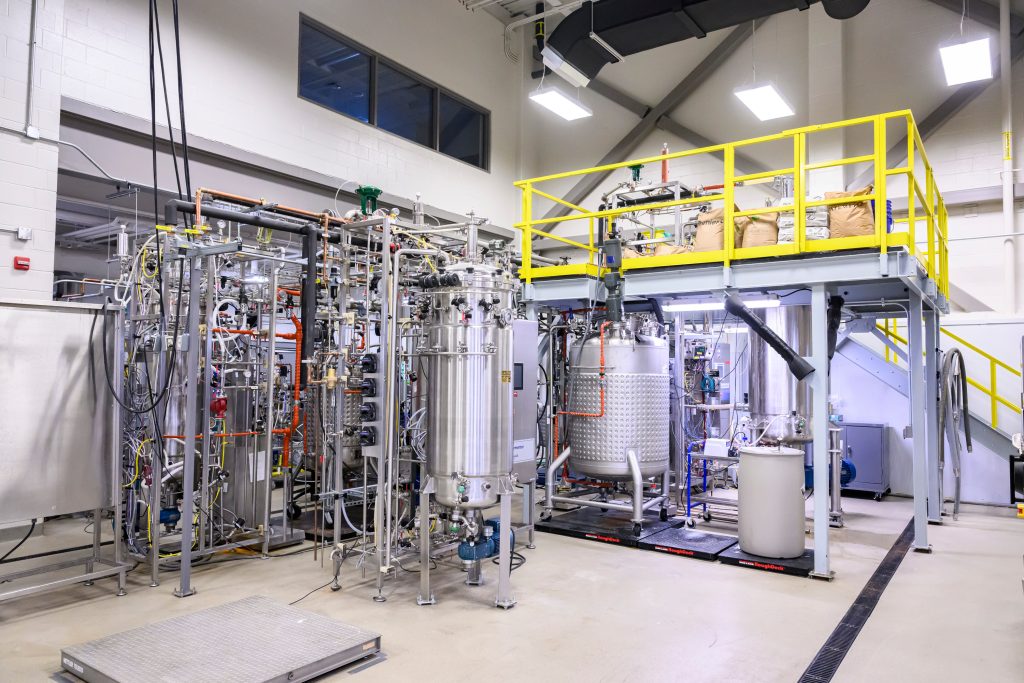Faraci highlights major agricultural development in Champaign County
Faraci highlights major agricultural development in Champaign County Illinois Senate Democratic


CHAMPAIGN – State Senator Paul Faraci announces investments secured for the Illinois Fermentation and Agriculture Bio-manufacturing Tech Hub

Introduction
State Senator Paul Faraci has announced that significant investments have been secured for the Illinois Fermentation and Agriculture Bio-manufacturing Tech Hub. This article will discuss the importance of these investments and their impact on Illinois’ local economies.
Investments for the Tech Hub
The Tech Hub has received a total of $680 million in combined grants. These investments will be used to create the necessary infrastructure to meet the current demand for bio-manufacturing and precision fermentation. The Tech Hub, known as iFAB, focuses on fermentation as a bio-manufacturing tool, converting crops like corn and soybeans into various commodities.
Benefits for Illinois
The investments in the Tech Hub aim to drive economic growth and innovation for a sustainable future. By capitalizing on Illinois’ strength in agricultural production, the project aims to position the state as a leader in bio-manufacturing.
Partnerships for Success
Robert J. Jones, chancellor of the University of Illinois Urbana-Champaign and co-vice chair of Innovate Illinois, emphasizes the importance of collaboration between universities and industry. He believes that when these entities work together, there is a significant increase in the speed of development and implementation. This collaborative ecosystem for discovery and innovation is what makes Illinois a leader in the field.
For More Information
For more information on the iFAB Tech Hub, please visit their website here.
SDGs, Targets, and Indicators
1. Which SDGs are addressed or connected to the issues highlighted in the article?
- SDG 9: Industry, Innovation, and Infrastructure
- SDG 8: Decent Work and Economic Growth
- SDG 2: Zero Hunger
2. What specific targets under those SDGs can be identified based on the article’s content?
- SDG 9.5: Enhance scientific research, upgrade the technological capabilities of industrial sectors in all countries, in particular developing countries, including, by 2030, encouraging innovation and increasing the number of research and development workers per 1 million people and public and private research and development spending.
- SDG 8.2: Achieve higher levels of economic productivity through diversification, technological upgrading, and innovation, including through a focus on high-value-added and labor-intensive sectors.
- SDG 2.3: By 2030, double the agricultural productivity and incomes of small-scale food producers, in particular women, indigenous peoples, family farmers, pastoralists, and fishers, including through secure and equal access to land, other productive resources and inputs, knowledge, financial services, markets, and opportunities for value addition and non-farm employment.
3. Are there any indicators mentioned or implied in the article that can be used to measure progress towards the identified targets?
The article does not explicitly mention any indicators to measure progress towards the identified targets. However, potential indicators could include:
- Number of research and development workers per 1 million people
- Public and private research and development spending
- Growth in economic productivity in the bio-manufacturing and precision fermentation sectors
- Increase in agricultural productivity and incomes of small-scale food producers
SDGs, Targets, and Indicators
| SDGs | Targets | Indicators |
|---|---|---|
| SDG 9: Industry, Innovation, and Infrastructure | SDG 9.5: Enhance scientific research, upgrade the technological capabilities of industrial sectors in all countries, in particular developing countries, including, by 2030, encouraging innovation and increasing the number of research and development workers per 1 million people and public and private research and development spending. | – Number of research and development workers per 1 million people – Public and private research and development spending |
| SDG 8: Decent Work and Economic Growth | SDG 8.2: Achieve higher levels of economic productivity through diversification, technological upgrading, and innovation, including through a focus on high-value-added and labor-intensive sectors. | Growth in economic productivity in the bio-manufacturing and precision fermentation sectors |
| SDG 2: Zero Hunger | SDG 2.3: By 2030, double the agricultural productivity and incomes of small-scale food producers, in particular women, indigenous peoples, family farmers, pastoralists, and fishers, including through secure and equal access to land, other productive resources and inputs, knowledge, financial services, markets, and opportunities for value addition and non-farm employment. | Increase in agricultural productivity and incomes of small-scale food producers |
Behold! This splendid article springs forth from the wellspring of knowledge, shaped by a wondrous proprietary AI technology that delved into a vast ocean of data, illuminating the path towards the Sustainable Development Goals. Remember that all rights are reserved by SDG Investors LLC, empowering us to champion progress together.
Source: illinoissenatedemocrats.com

Join us, as fellow seekers of change, on a transformative journey at https://sdgtalks.ai/welcome, where you can become a member and actively contribute to shaping a brighter future.







